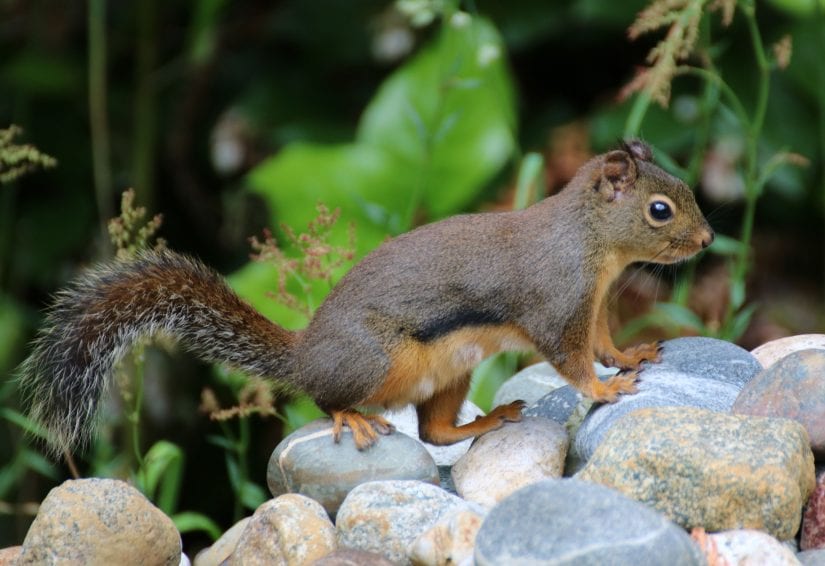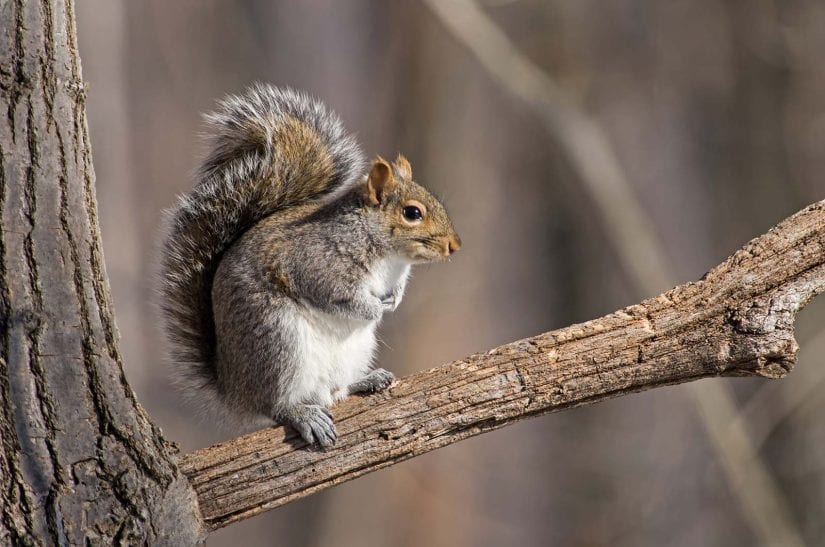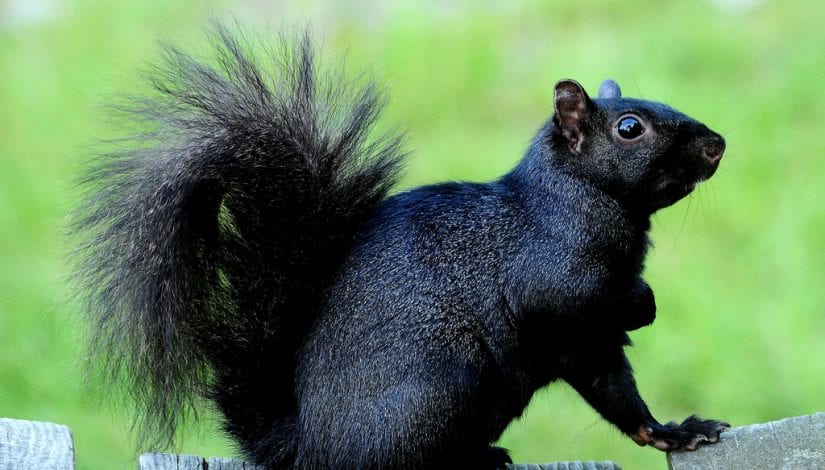B.C. has four species of tree squirrels. They feed on seeds, nuts, acorns, tree buds, berries, leaves and twigs. Squirrels gather and store food for later. They help plant distribution by gathering and planting acorns and nuts.
People may think they’re helping squirrels by feeding them, but squirrels can easily find food on their own, even in cities. Feeding squirrels may increase their chance of injury or death. Learn more, download our guide: Don’t feed the animals (PDF). Some people may also try to raise baby squirrels but it is illegal to keep squirrels as pets in B.C.
Got squirrels? Call an AnimalKind company, or read our best practices sheet (PDF) on how to handle squirrel problems or remove them from your home.

Find out when AnimalKind is available in your area
Types of squirrels in B.C.
Red squirrels and Douglas squirrels
Red squirrels and Douglas squirrels are our native tree squirrels. They are approximately the same size, but about half the size of grey squirrels. Red squirrels are rusty-red in colour with white underparts. Douglas squirrels are reddish-brown with yellow underparts.
They both live in coniferous forests, not cities. The Douglas squirrel is found only on B.C.’s southern coast, while the red squirrel is found almost everywhere in B.C. with the exception of the southern coast.

Northern flying squirrels
Northern flying squirrels are nocturnal animals that glide rather than fly. They are rarely seen but are fairly common in mature forests. Skin flaps between their front and back legs create “wings” and give them the ability to jump great distances.

Eastern grey squirrels
Grey squirrels are the most common squirrel in B.C.’s biggest cities. Grey squirrels are larger than native squirrels, can be grey, black or brindle in colour and have large, fluffy tails longer than their bodies. These squirrels thrive in urban environments.
Grey squirrels are designated as Schedule C animals by the B.C. government and can only be trapped and released within short distances. Injured grey squirrels can be brought to a wildlife rehabilitator for care. Grey squirrels should only be released in established urban populations, and not spread into new areas. Read more about the legal case the BC SPCA won to ensure the welfare of grey squirrels through professional rehabilitation whilst trying to limit their reproductive success and ensure they are not spread by others.

Are grey squirrels invasive?
They are sometimes called “invasive” or “alien”, but research in B.C. shows grey squirrels are just better adapted to cities than the native squirrels. Native squirrels prefer forest habitat and move out when urban development moves in.
Grey squirrels are native to eastern parts of Canada and the United States. They were introduced to Stanley Park in 1909 and on southern Vancouver Island in 1966. Grey squirrels are now well established in the Lower Mainland and in the Capital Regional District on Vancouver Island, but should not be introduced into new areas.

Grey squirrels are often blamed for decrease in native squirrels
Grey squirrels co-occur with red squirrels over large parts of North America. These squirrels have different food and shelter preferences. Urban development and loss of coniferous forests is more likely responsible for native squirrel population declines.
Research in B.C. found that grey squirrels would be unlikely to displace other squirrels on Vancouver Island, and there is little evidence of this happening in Vancouver (Hwang & Lariviere 2006; Gonzales 2005; Gonzales et al. 2008).
Grey squirrels in British Columbia do not carry squirrelpox virus
Squirrelpox virus (or squirrel parapox virus) has not been reported in British Columbia, though grey squirrels in Ontario (in their natural range) tested positive for antibodies to the virus (McInnes et al. 2020). In Europe, grey squirrels do carry the virus and can pass it to the European red squirrel, which is a different species than our red squirrel in B.C. To maintain this virus-free status in B.C., further introductions of grey squirrels from their native range should be prevented.

